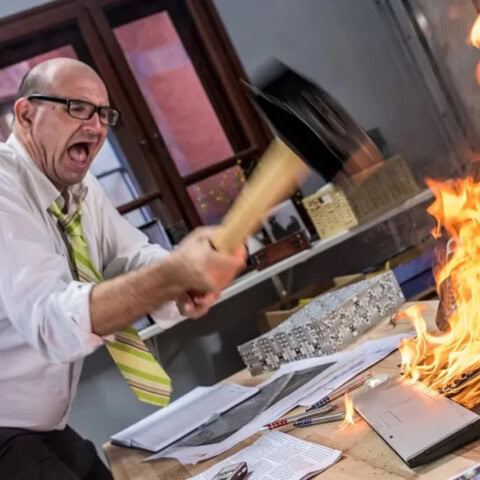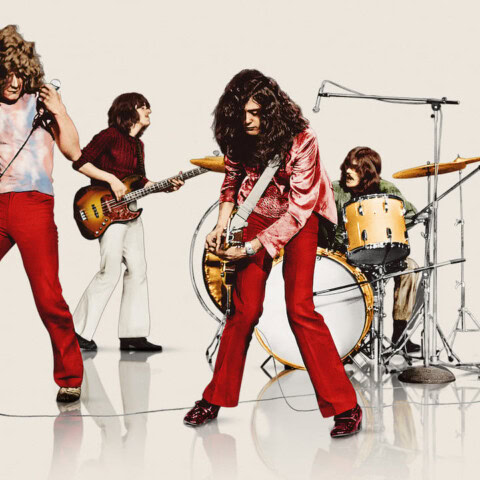ANDREW JOHNSTONE explains how a genius Japanese animator changed his life.
 In 2002 I was leafing through the programme for the Hamilton International Film Festival and was taken by the blurb for a film called Spirited Away. Billed as an animation adventure for both adults and children, it looked like it might be fun.
In 2002 I was leafing through the programme for the Hamilton International Film Festival and was taken by the blurb for a film called Spirited Away. Billed as an animation adventure for both adults and children, it looked like it might be fun.
I loaded my 11 year old step-son into the car and off we went. What followed was one of those rare film events that plays like a mystical voyage of discovery, and as the final credits rolled I sat there somewhat lost for words. I looked at Winston and he looked at me. What could we possibly say to each other that could summarise the beauty and joy of what we had just experienced?
Spirited Away Directed by Hayao Miyazaki (2001)
After that I became a rabid fan of all things Ghibli, the studio founded and helmed by Hayao Miyazaki and Isao Takahata, and among the many films that became family favourites over the next few years was Takahata’s Grave Of The Fireflies (1988). This story of a brother and sister trying to survive the last days of World War II educated our four-year-old girl about life and its relationship to death. I have wonderful memories of Charlotte imitating the doomed Setsuko, the young girl at the centre of the story. I even found the same brand of boiled sweets Setsuko enjoyed and made sure Charlotte always had some at hand.
While some parents might balk at a four-year-old exploring such themes, we let her do it and a few months later when her grandfather died I sat her down to explain, and her response was reassuring: “I know all about these things.” Later she approached the death of numerous beloved cats with the same stoic pragmatism, reinforcing my own belief that children are better off knowing the ways of the world rather than being sheltered from the stark realities. These were not simplistic animations, they were profound and multi-layered stories that addressed difficult subjects while attempting to offer some commentary on the inexplicable mysteries. The insights, I was learning, were invaluable.
Grave Of The Fireflies Directed by Isao Takahata (1988)
Then there is the nature imagery. The flowing grasses, the prescient blue skies, the mystical woodlands. Somehow, Miyazaki seemed to share a similar inner-world view to myself, perhaps proving Jung’s idea about shared symbolic archetypes. If I were to try and explain the landscape of my unconscious mind, what better medium than Nausicaa Valley Of The Wind or Laputa Castle In The Sky, Princess Mononoke and yes, Spirited Away. Ghibli was turning out to be both an entertaining and spiritual experience, for me at least.
Kingdom Of Dreams And Madness is a gentle and spirited documentary that follows Miyazaki through the making of his final film The Wind Rises. The result is a poignant and observational affair full of philosophy, political comment and humorous asides. Miyazaki is revealed to be a man of many complexities with plenty to say about the human condition. He wonders about the pursuit of happiness and asks if happiness is all it’s cracked up to be, while revealing his own mood struggles. He asks if there is any point to the films he has made and muses that it might have all been nothing but a grand hobby offering nothing of any significance to humanity at large.
We hear about the man from his long-time producer Suzuki and we learn about the even more complex (and mysterious) Takahata from Miyazaki himself. The camera stares down the studio’s resident cat (cats feature heavily in the Ghibli universe), visits Miyazaki at home and takes us out onto the roof of the studio and shows us the skyline that is so much a feature of the films. Miyazaki explains his routine which includes a half-day of river cleaning every week, and if you have seen Spirited Away you will know his feelings about the state of Japan’s waterways.
 I cried through the final credits of The Wind Rises, as did Miyazaki. A fitting film to end a unique career, it is perhaps Miyazaki’s greatest personal achievement, touching as it does on his memories of the war with America, his father’s role in the Japanese war machine and the state of public indifference that allowed the Imperial Japanese forces to act as they did. Otherwise all the typical Miyazaki preoccupations are there: female emancipation, flight, the environment, dreams and the human heart in all its manifold colours.
I cried through the final credits of The Wind Rises, as did Miyazaki. A fitting film to end a unique career, it is perhaps Miyazaki’s greatest personal achievement, touching as it does on his memories of the war with America, his father’s role in the Japanese war machine and the state of public indifference that allowed the Imperial Japanese forces to act as they did. Otherwise all the typical Miyazaki preoccupations are there: female emancipation, flight, the environment, dreams and the human heart in all its manifold colours.
As for Jiro, the man who designed Japan’s deadliest war machine (the Zero fighter) and the central figure of The Wind Rises, Miyazaki reminds us that dreamers always hope the best for their creations but humanity has a bad habit of distorting those dreams, twisting them, breaking them. On that note, mid-way through production the government steps in. Concerned about Miyazaki’s subject matter, they offer him a list of instructions on what he can and can’t say, the Second World War still being the touchy subject it is in Japan. Miyazaki shrugs his shoulders, mutters and carries on regardless.
https://www.youtube.com/watch?v=imtdgdGOB6Q&t=5s
The Wind Rises Directed by Hayao Miyazaki (2013)
The closing shot of Kingdom Of Dreams And Madness sees Miyazaki walking toward the camera, cigarette burning and eyes ever-turned toward dreams. More than just a tribute to one of cinema’s great creative artists, Kingdom Of Dreams And Madness transcends the dutiful portrait. As deftly crafted as any Ghibli animation, all the appropriate notes are played and the result is mesmerising.
https://www.youtube.com/watch?v=Oqh5gN4qqFQ
The Kingdom of Dreams and Madness Directed by Mami Sunada (2013)














